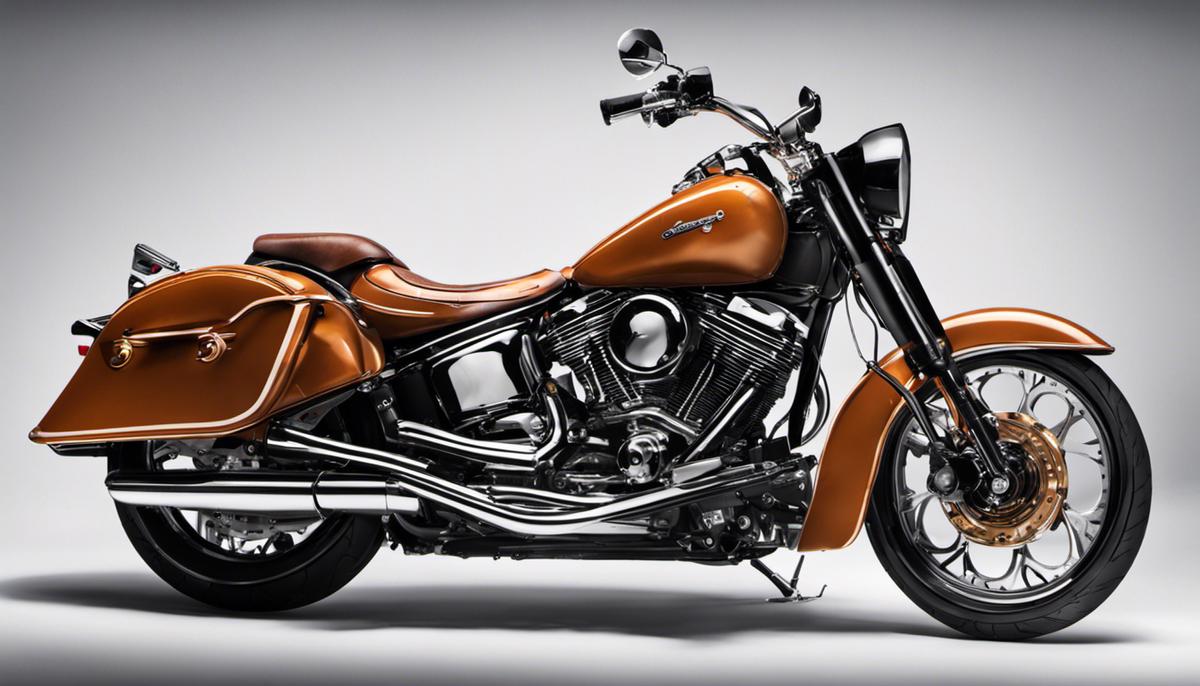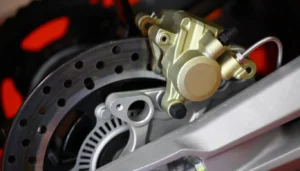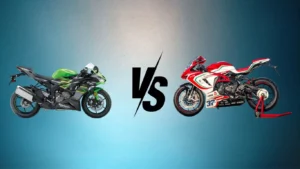Motorcycle vibrations, while often considered a natural part of the biking experience, can be a complex concept to grasp fully, given their various forms, causes, impacts and solutions. These vibrations not only contribute to the rider’s tactile sense of control and engagement but when excessive, can also lead to various health problems or even damage to the motorcycle. The significance of understanding these vibrations can not be understated for riders – more so for those who spend extensive periods in the saddle. This extensive review delves into not just the essence and types of motorcycle vibrations but also highlights the potential impacts on both the rider and the motorcycle. Moreover, a comprehensive guide will draw attention to identifying problematic vibrations and offer solutions and preventive measures to address these often overlooked but crucial issues.
Understanding Motorcycle Vibrations
Motorcycle vibrations are part and parcel of the ride. A motorcycle employs an internal combustion engine, which implies a sequence of small explosions occur resulting in forceful movements. These forceful movements vibrate the engine and, in turn, the entire motorcycle. Depending on the make, model, engine configuration, and age of the motorcycle, the degree of vibration can vary significantly.
Types of Vibrations: High-Frequency and Low-Frequency
Most motorcycle vibrations can be classified into two groups: high-frequency and low-frequency vibrations. High-frequency vibrations occur when the motorcycle’s rpm (revolutions per minute) is high. These vibrations are often felt as a tingling in the rider’s hands, seat, or feet. On the other hand, low-frequency vibrations can be felt when the motorcycle is lugging or under stress, like when traveling uphill or at high speed with a low rpm. These typically feel like a heavy, deep shake.
Causes of Vibrations
Several factors might contribute to a motorcycle’s vibrations. This includes factors like engine configuration, with single or parallel twin motorcycles often vibrating more than those with V-twin or inline four engines. The age of the motorcycle and the wear and tear on various parts can also impact the vibration felt. Engine mountings, improper alignment of wheels, imbalance of rotating parts, worn-out tires, or issues with the drive chain or belt can all result in increased vibrations.
Furthermore, motorcycles with higher rpm ranges or those that rev faster are likely to have higher frequency vibrations. These are more common in sports motorcycles with higher performance engines.
Distinguishing Normal from Abnormal Motorcycle Vibrations
Understanding the difference between normal and abnormal motorcycle vibrations is essential for good maintenance practices. It helps riders identify possible issues before they result in serious problems or even a breakdown. Expected vibration, such as those felt during acceleration or at certain revolutions per minute (rpm), are entirely normal. These are primarily due to the engine’s combustion process. Amplified vibration might be felt when the motorcycle accelerates, typically subsiding once the cruising speed is achieved. On the other hand, when vibrations become noticeably intense or are continuously felt, even while idle, it’s a sign of potential problems that require attention.
Abnormal vibrations might be a symptom of various problems, including imbalanced wheels, depleted brake pads, weakening engine mounts, warped brake discs, or substantial internal engine issues. For instance, loose engine mounts might allow excessive vibration to transfer from the engine to the frame, thus increasing the general vibration level felt during the ride. Alternatively, a loose or faulty wheel bearing might generate unusually high-pitched or grinding sounds, together with increased vibration.
A sudden change in vibration levels or patterns should be taken seriously by any rider. If noticed, it is wise to have the motorcycle evaluated by a professional mechanic. A properly serviced motorcycle, with balanced tires, a perfectly adjusted chain or drive belt, and a sound engine should provide a ride where vibrations contribute to the riding experience, rather than discomfort.

Impact of Motorcycle Vibrations
Comprehending Issues Related to Motorcycle Vibrations
Experiencing vibrations while riding is common for every motorcycle rider. However, when these vibrations become excessive, they can cause various health problems for the rider and might even result in mechanical issues for the motorcycle. Typically, a rider has constant contact with the motorcycle’s handlebars and footrests through their hands and feet, therefore making these body parts largely susceptible to such vibrations.
Hand-Arm Vibration Syndrome (HAVS)
One of the most common health-related issues due to prolonged exposure to motorcycle vibrations is Hand-Arm Vibration Syndrome (HAVS). HAVS is a medical condition triggered by continual exposure to vibrations which affects blood vessels, nerves, muscles, and joints of the hand, wrist, and arm. Symptoms typically include sensory loss, muscle weakness, and in the most severe cases, could lead to the ‘white finger’ disease or vibration white finger (VWF).
Further Health Impacts of Motorcycle Vibrations
Neck strain is also a common complaint amongst riders due to continuous head-bobbing caused by motorcycle vibrations during a ride. Some motorcyclists may also experience lower back pain caused by the spinal compression and vibrations traveling up the spine. Additionally, prolonged exposure to these vibrations can lead to temporary or permanent loss of sensation in the lower half of the body, commonly referred to as ‘dead butt’ syndrome.
Motorcycle Damage and Reduced Performance
Not only do motorcycle vibrations impact the physical health of the rider but they can also cause mechanical damage to the motorcycle itself. Excessive vibrations can cause parts of the motorcycle to become loose, leading to a decrease in performance and potentially expensive repairs. Key areas of the motorcycle that can be affected include the engine mounts, handlebars, mirrors, and chassis. This sustained shaking can damage these essential components, causing them to wear out prematurely.
Addressing Motorcycle Vibrations: A Guide
As both new and old hand riders continually share the road, it becomes crucial to underscore the significance of understanding and lessening motorcycle vibration issues. In the journey of motorcycle riding and maintenance, these vibrations are often misunderstood or ignored, thereby exposing riders to potential danger and reducing the motorcycle’s lifespan. Thankfully, motorcycle manufacturers have embraced a proactive role in limiting these vibrations, using changes in engineering and implementing rubber mounts to subdue them. Riders too can fend off extensive vibrations by incorporating vibration-dampening apparel, such as gloves, and using padded seat covers for extra safety. An essential step towards safety and longevity is regular motorcycle maintenance and check-ups to ensure vibration levels remain normal.
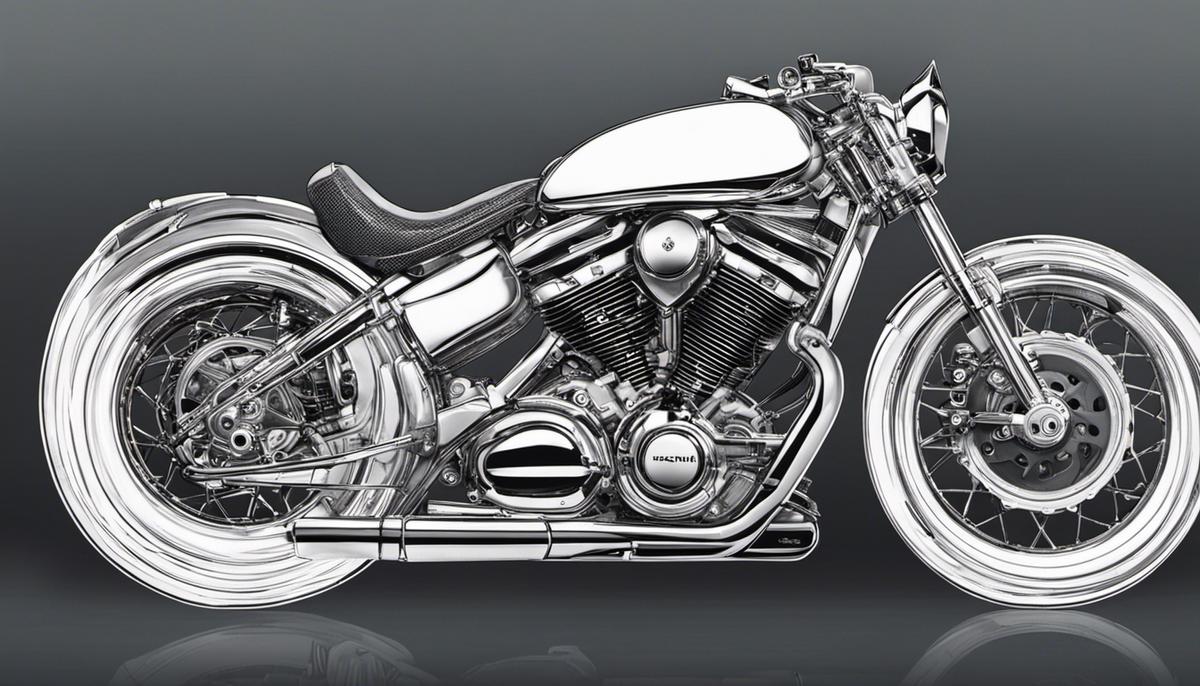
Identifying and Diagnosing Vibration Problems
Detecting Unusual Vibrations in Motorcycles
Recognizing that motorcycles invariably produce vibrations to some degree due to their design and operation is key. However, it’s critical to differentiate between vibrations forming part of the regular bike operation and those degrading the motorcycle and the riding experience. Normal operational vibrations are usually rhythmic and patterned, unlike problematic vibrations which are erratic, overly harsh, or persistently increasing.
To discern a vibration issue, keep an eye out for a significant shift in the bike’s usual vibrational pattern. This shift might be observable in the handlebars, foot pegs, or even throughout the chassis. Sound changes, like unexpected rattles, knocks or hums, that correspond with engine RPM or bike speed could be additional indicators of complex bike vibration issues.
Diagnosing Motorcycle Vibration Problems
Once you’ve identified abnormal vibrations, the process of diagnosing their cause begins. This can range from quite simple checks to comprehensive mechanical inspections.
The first step in diagnosing motorcycle vibrations is to perform a visual inspection. Look for any loose, damaged, or unusually worn parts. Check the tires for proper pressure and even tread wear. Examine the overall alignment of the bike, including the alignment of front and rear wheels.
Following the visual inspection, focus on the engine mountings. Loose, worn out or damaged engine mounts can be a major cause of abnormal vibrations. You should also check the chain or belt drive tension and condition. Too much play can cause uneven forces that translate into vibrations.
Comprehensive Mechanical Checks
If the issue isn’t identified during the preliminary stages, a more comprehensive mechanical check may be required. Detailed inspection and testing of the engine can prove helpful in diagnosing internal issues that can cause excessive vibrations. Misfires, imbalances, or faulty bearings can all contribute to vibration problems.
It’s also a good idea to inspect the suspension system. Worn out or damaged suspension components or unevenly inflated tires can lead to vibrations.
Last but not least, inspect your brake system. Inefficient brake performance due to warped rotors or worn-out pads can result in vibration, especially during braking.
A Summary
To sum it up, the process of identifying and addressing vibration issues in motorcycles demands meticulous observation, straightforward visual examinations, and sometimes, a thorough mechanical analysis. By looking out for any abnormal alterations and regularly maintaining your motorcycle, you can ensure that your ride remains smooth, comfortable, and enjoyable.
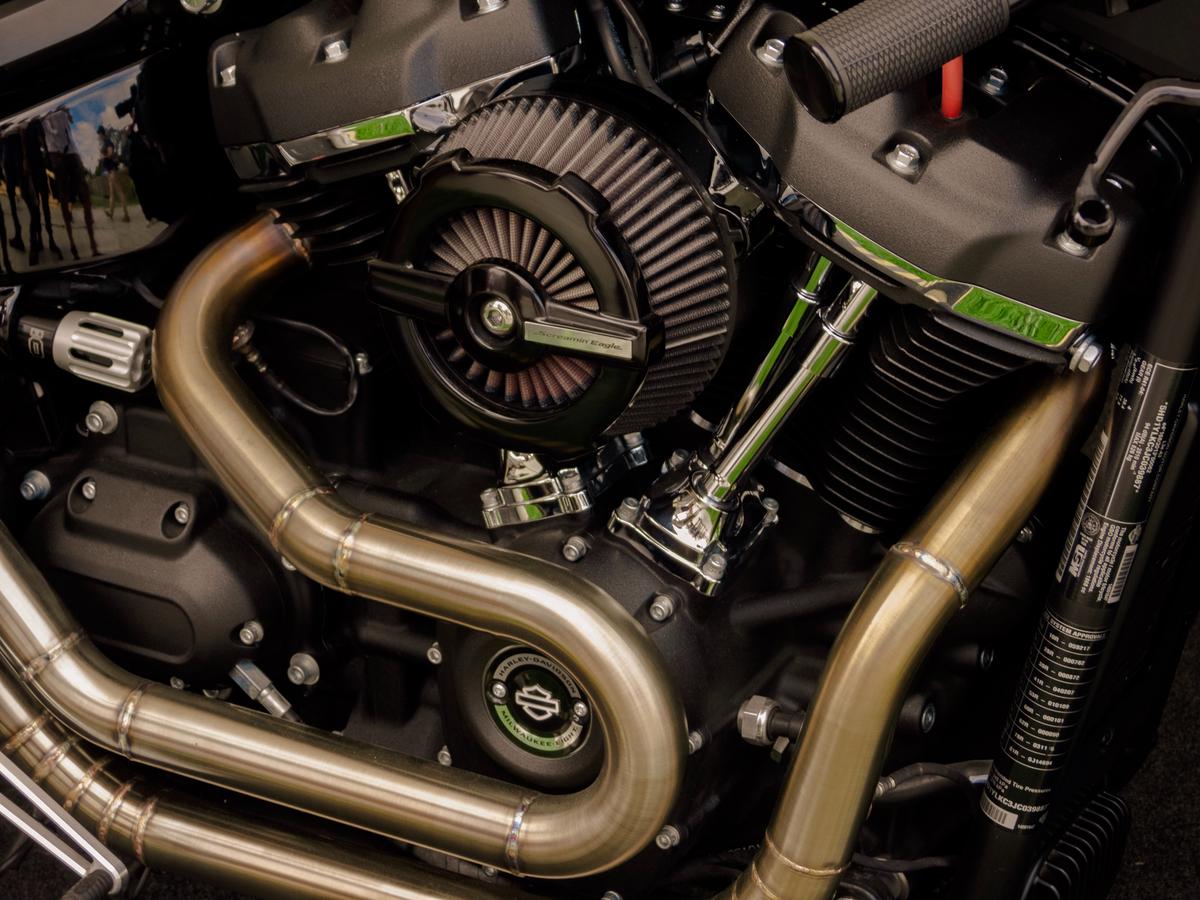
Photo by jannerboy62 on Unsplash
Solutions and Preventive Measures for Vibration Issues
An In-depth Look at Motorcycle Vibration Issues
Issues with vibration in motorcycles can stem from a plethora of underlying problems, notably affecting both the rider’s comfort and safety. Factors contributing to these vibrations can be traced back to various parts of the motorcycle. This includes areas like the engine, transmission, tires, and even the suspension systems.
Common Causes of Motorcycle Vibration
The most common cause of motorcycle vibration is a misaligned or imbalanced component. This could be anything from the tires, wheels, brake rotors, or clutch, to less obvious parts like the steering head bearings or swingarm pivot. Other common causes include loose or worn parts, such as brake pads, chains, or gear mechanisms. Additionally, motorcycles, especially older models, inherently vibrate due to the explosion of gasoline in the engine, which powers the bike.
Solutions to Motorcycle Vibration Issues
To address these vibration issues, riders should regularly perform basic maintenance and checks on their bikes. For instance, ensuring your tires are balanced and inflated to the correct pressure can help to minimize vibration. If your bike has a chain drive, regularly inspect and adjust it as needed.
If the motorcycle continues to vibrate excessively despite these minor adjustments, you might need to resort to bigger repairs. This could entail jobs like replacing worn-out brake pads or rotors, changing worn-out chains or sprockets, or investigating deeper engine issues. If you’re not an experienced mechanic, it’s recommended to bring your bike to a professional to handle these more significant repairs.
Preventive Measures to Minimize Vibration
Improving your riding technique and using certain accessories can limit your exposure to harmful vibrations. One such technique includes keeping your grip on the handlebars light to avoid amplifying the vibration. Try to relax your body during the ride, allowing your joints to act as additional shock absorbers.
The implementation of vibration dampening accessories is another effective strategy. These can range from foam-based grips or bar-end weights on the handlebars to special seat pads or cushioning footpegs. Depending on your particular bike and the source of the vibration, an effective combination of these practices can help reduce discomfort while ensuring a safe and enjoyable ride.
Keeping the Bike Vibration at Bay
Regular servicing and timely replacement of worn-out parts can significantly contribute to reducing motorcycle vibration. It’s always suggested to follow your manufacturer’s guidelines on servicing timeline. Additionally, properly breaking in a new motorcycle can also help in preventing excessive vibrations, by allowing components to mesh together smoothly over time.
It’s important to remember that motorcycle vibrations are not always a cause for alarm. All motorcycles vibrate to some degree due to the raw nature of the internal combustion engine. However, being proactive about maintenance, regular checks, and adopting the right riding techniques can go a long way in managing and reducing excessive motorcycle vibration.

Recognizing and effectively managing motorcycle vibrations is an essential part of riding and owning a bike. From identifying red flags indicative of excessive vibrations to implementing measures to reduce exposure, there is a plethora of practical knowledge that can enhance your overall riding experience while safeguarding your health and the integrity of your motorcycle. From mere adjustments to significant repairs, a host of solutions lies at your disposal. Furthermore, through conscious effort in honing riding techniques, using vibration-dampening accessories and consistent motorcycle maintenance, you can ensure a smoother, safer, and enjoyable ride. Understanding and addressing vibrations equips you with the key to prolong the life of your bike and experience the joy of riding as it was intended, rhythmically in harmony with the vibrations rather than disrupted by them.
